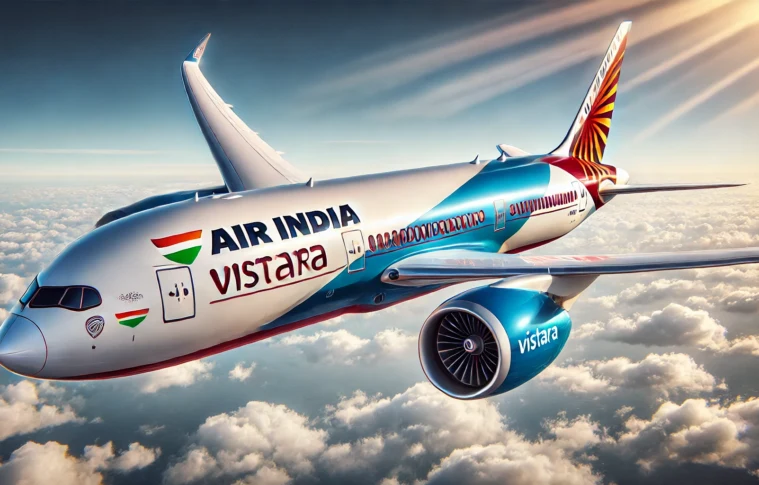In a landmark development for India’s aviation industry, the Tata Group has officially completed the merger of Air India and Vistara, creating the nation’s largest international airline. The unified entity is set to expand its reach, offering enhanced connectivity and an improved passenger experience as it takes a leading role in both domestic and international air travel markets.
The merger was finalized as Tata Sons integrated Vistara, a joint venture with Singapore Airlines, into Air India’s existing operations. Following the merger, Singapore Airlines will now hold a 25.1% stake in the newly unified airline, positioning it as a major shareholder alongside Tata Sons. The merged airline now claims the title of the largest international carrier from India by number of routes, destinations, and fleet size, placing it in direct competition with established global carriers.
What the Merger Means for Indian Aviation
With this merger, Tata Group’s aviation portfolio now spans across Air India, Air India Express, and AIX Connect (formerly AirAsia India), creating a comprehensive offering across price segments and travel experiences. The airline will continue to operate under the Air India brand, integrating Vistara’s renowned service standards and international partnerships, particularly its codeshare agreements with Singapore Airlines.
Enhanced Passenger Services and Fleet Expansion
The combined fleet of the two airlines now consists of over 200 aircraft, offering greater capacity, operational efficiencies, and streamlined services. This significant fleet includes wide-body planes such as the Boeing 787 and Airbus A350, which are suited for long-haul international routes and will support Air India’s expansion goals in the US, Europe, and other high-demand markets.
The Tata Group has also highlighted plans to modernize its fleet and improve in-flight services by incorporating Vistara’s well-regarded hospitality and technology advancements. Additionally, the merger will enable unified loyalty programs and streamlined ticketing, allowing for a more seamless passenger experience.
A Win for the Indian Aviation Industry
This merger marks a pivotal step forward in strengthening the global presence of Indian aviation. By combining forces, Tata Group is better positioned to challenge Middle Eastern and Southeast Asian airlines that dominate long-haul routes from India. Analysts anticipate that the consolidation will increase India’s competitiveness in the global aviation sector while offering Indian travelers more convenient, high-quality options.
Air India’s CEO expressed optimism about the merger, emphasizing that it not only fulfills Tata’s vision of transforming the airline but also supports India’s broader economic and tourism ambitions by enhancing connectivity.
Disclaimer for Readers:
This article is for informational purposes only. All details and projections about the Air India-Vistara merger are based on publicly available information at the time of writing and are subject to change. Readers are advised to consult official announcements or trusted sources for the most current updates on this matter.



